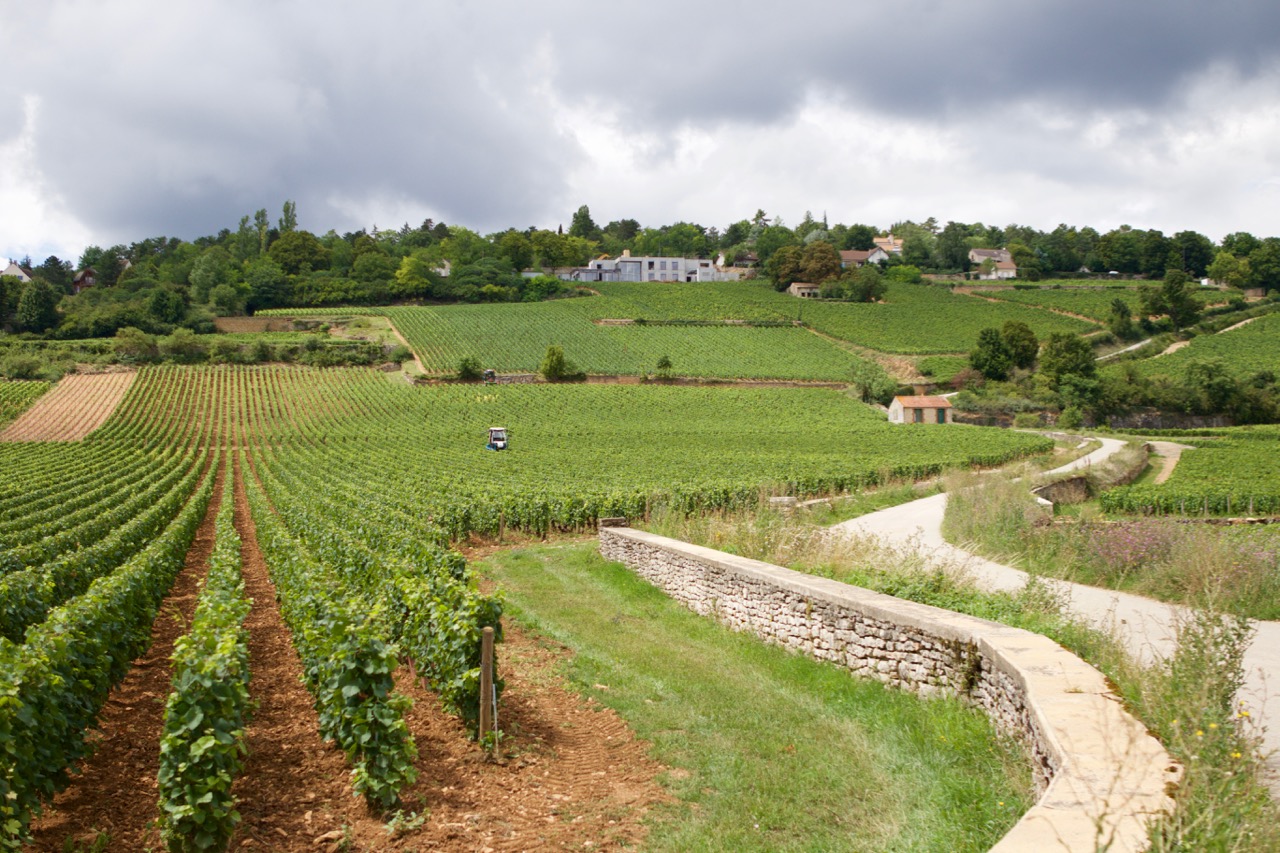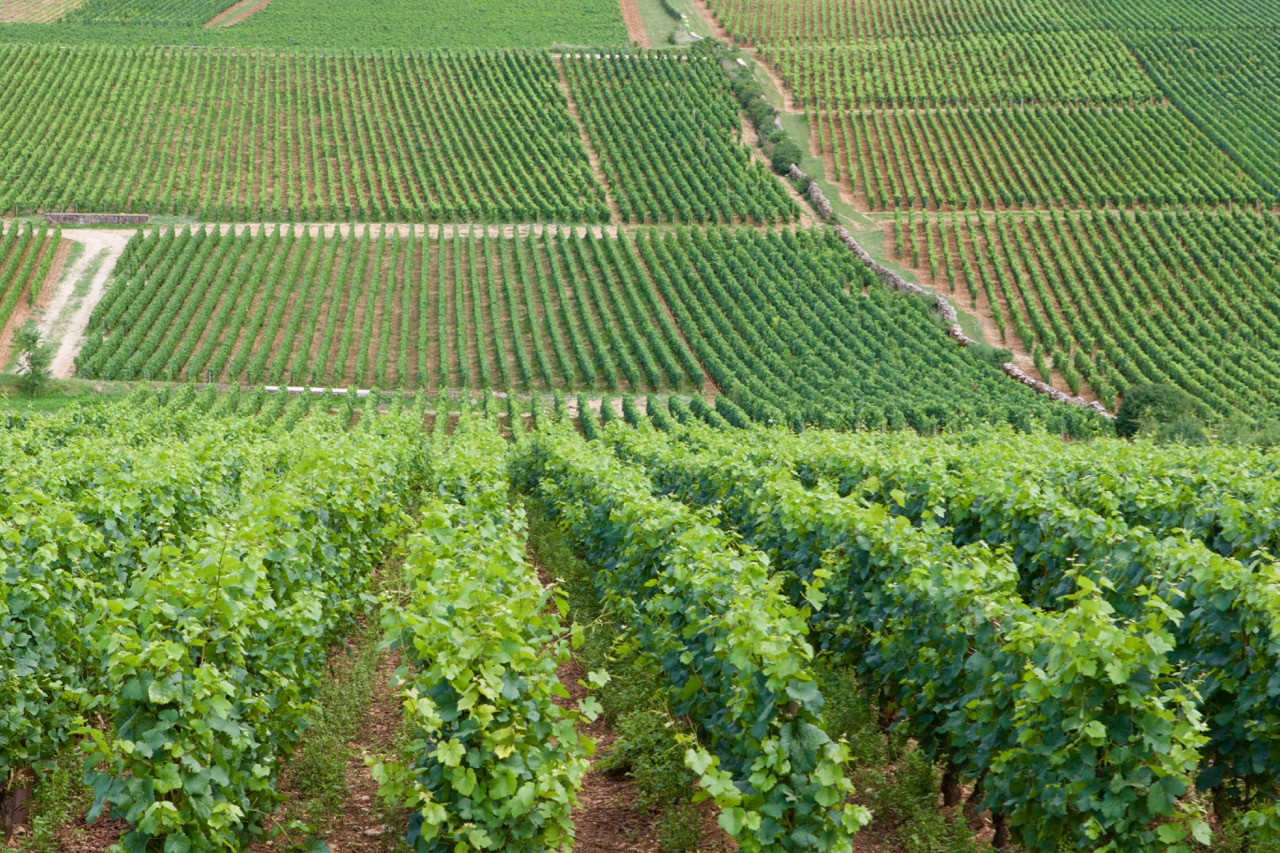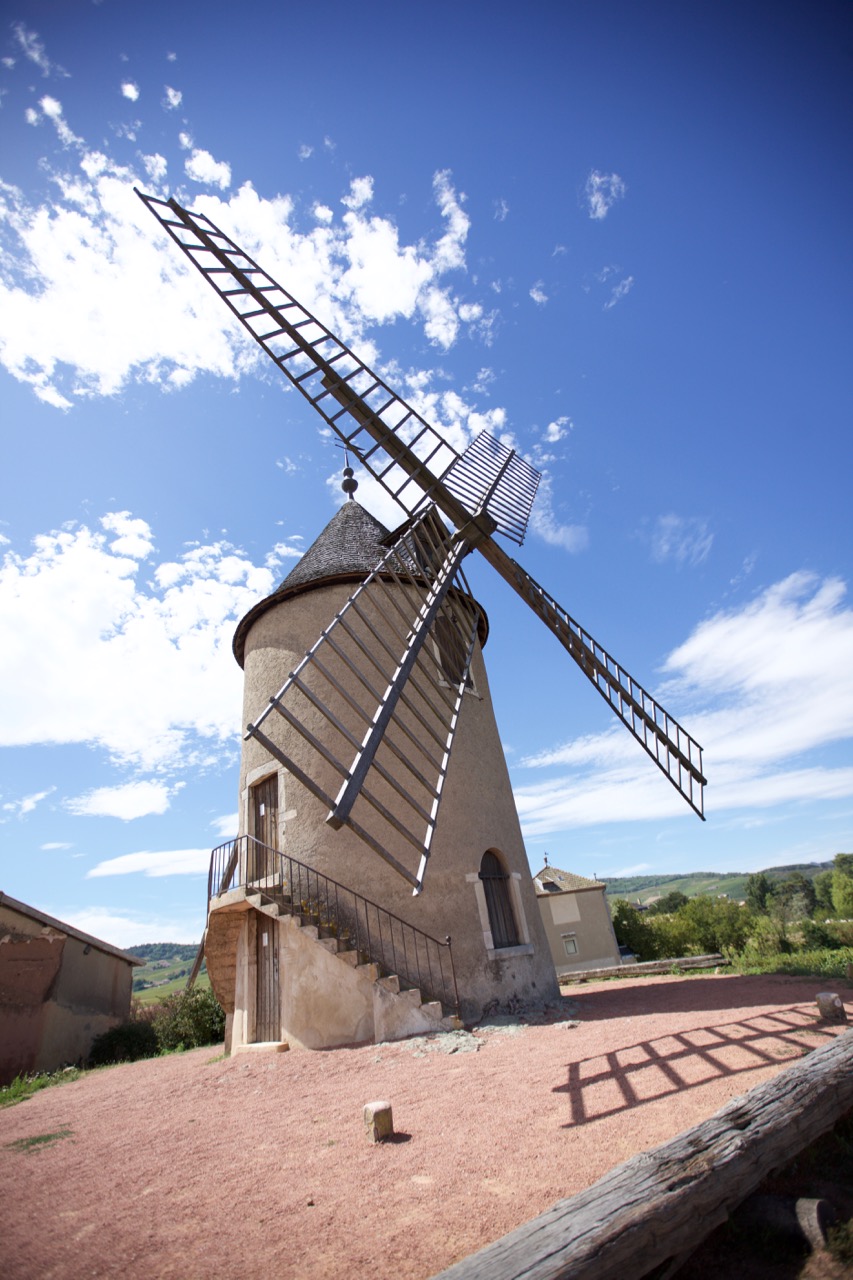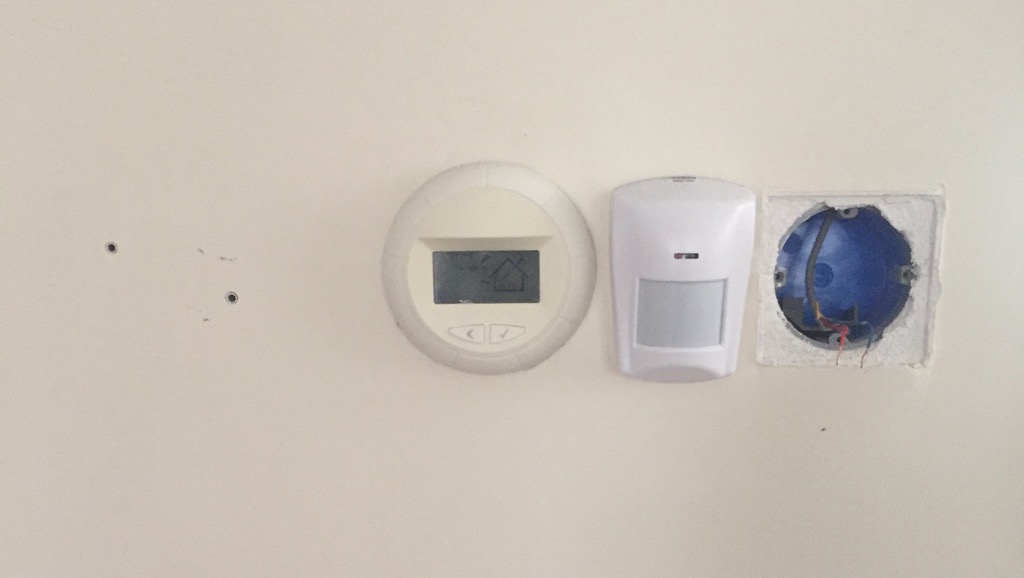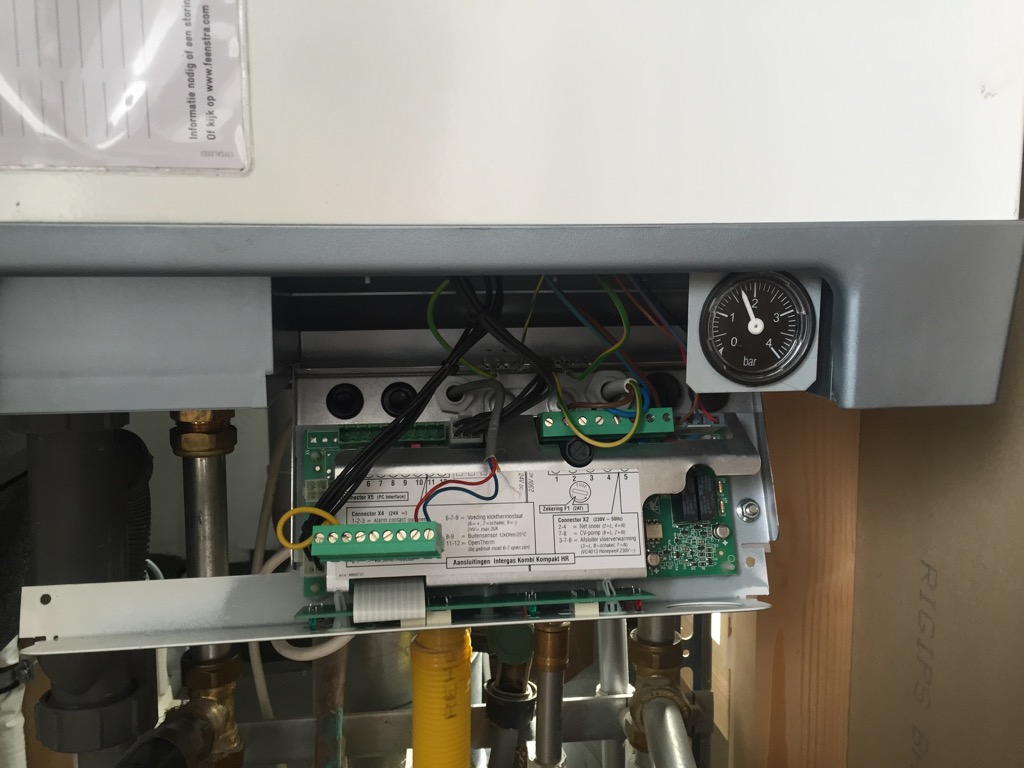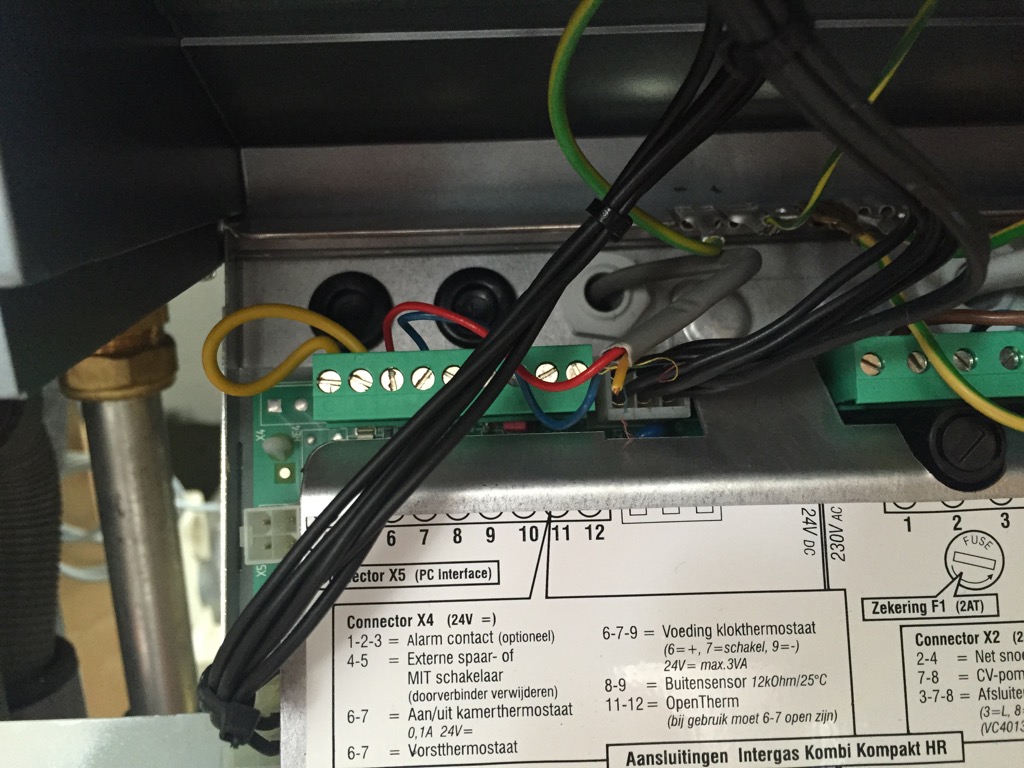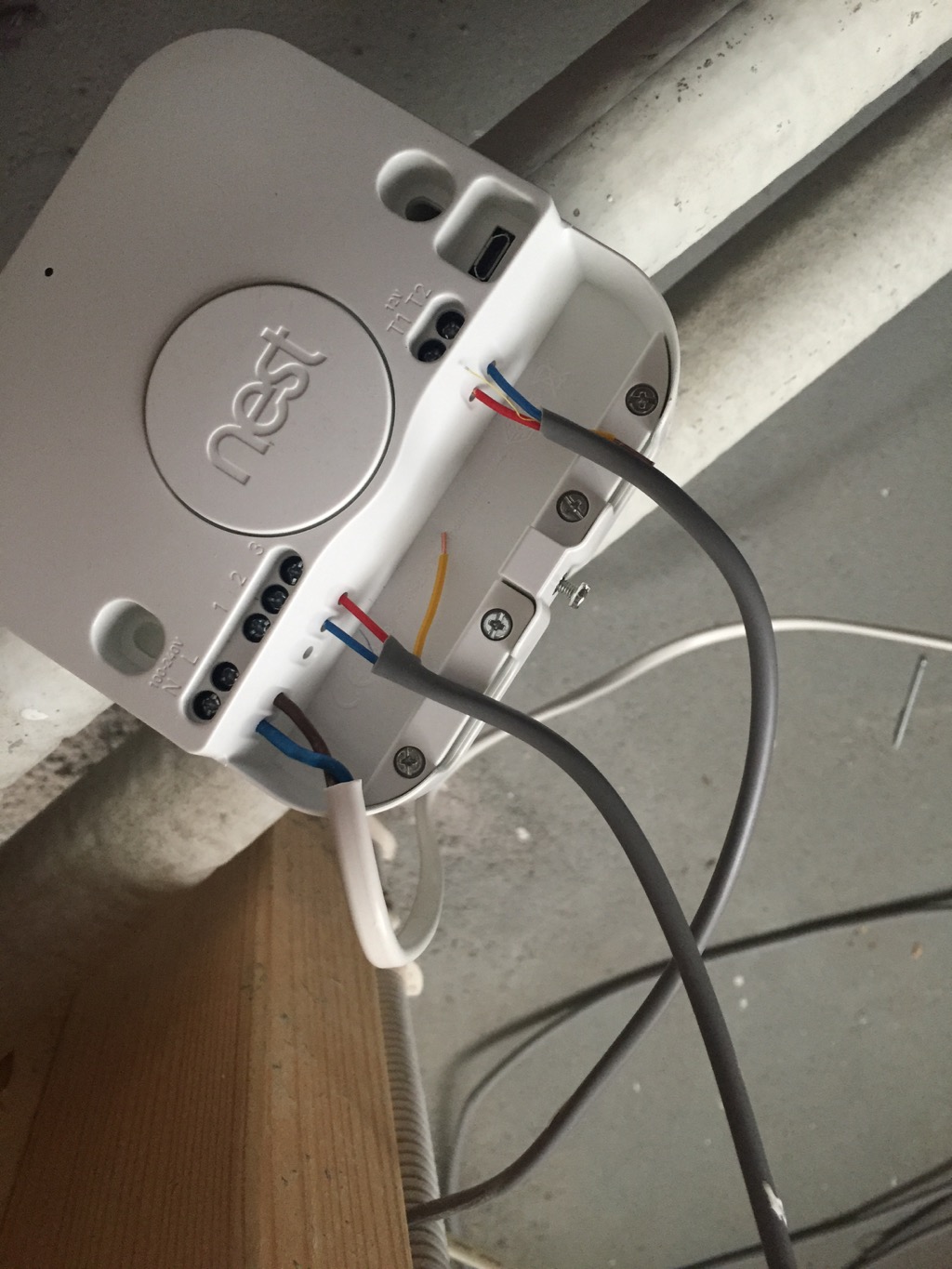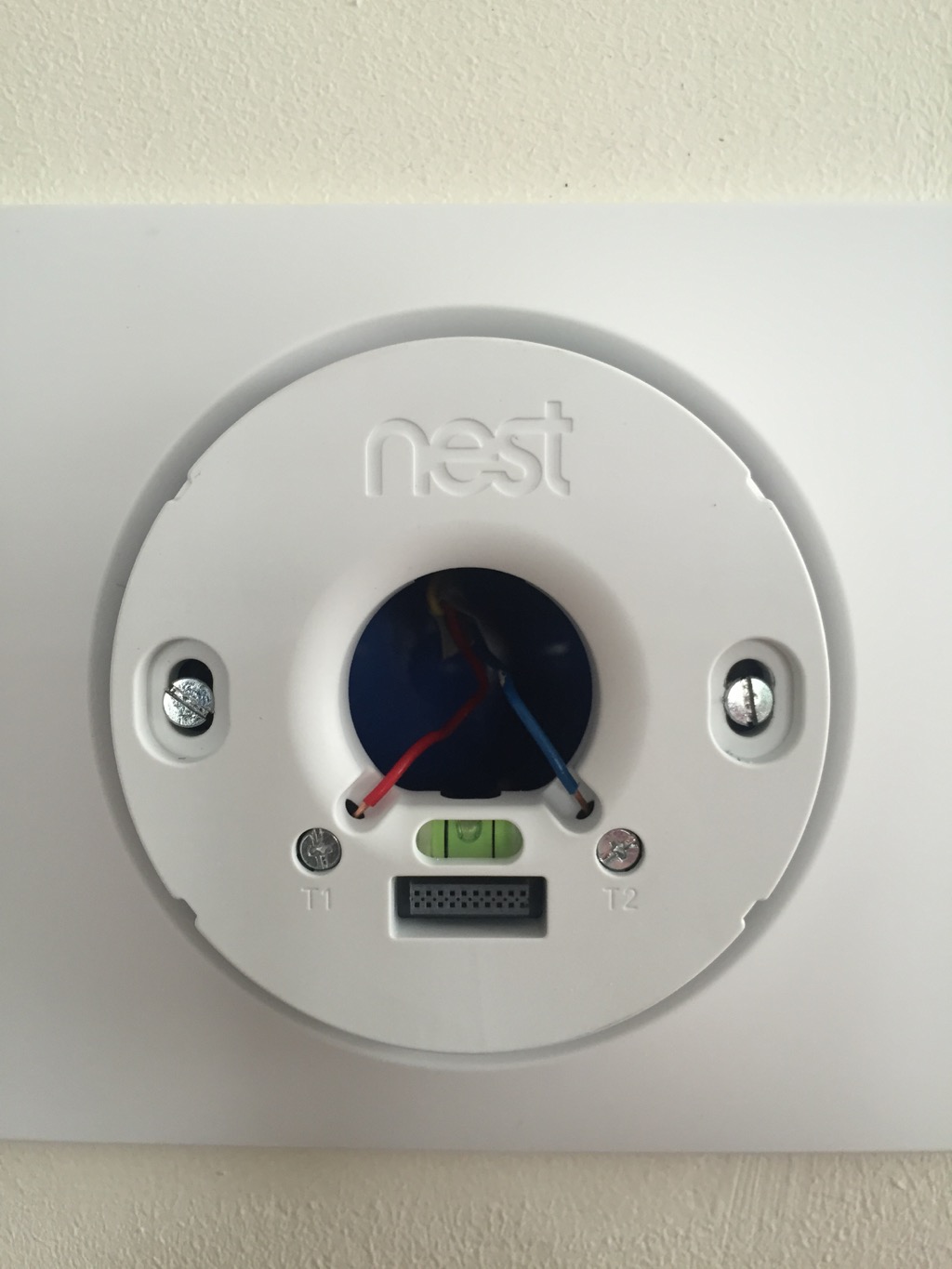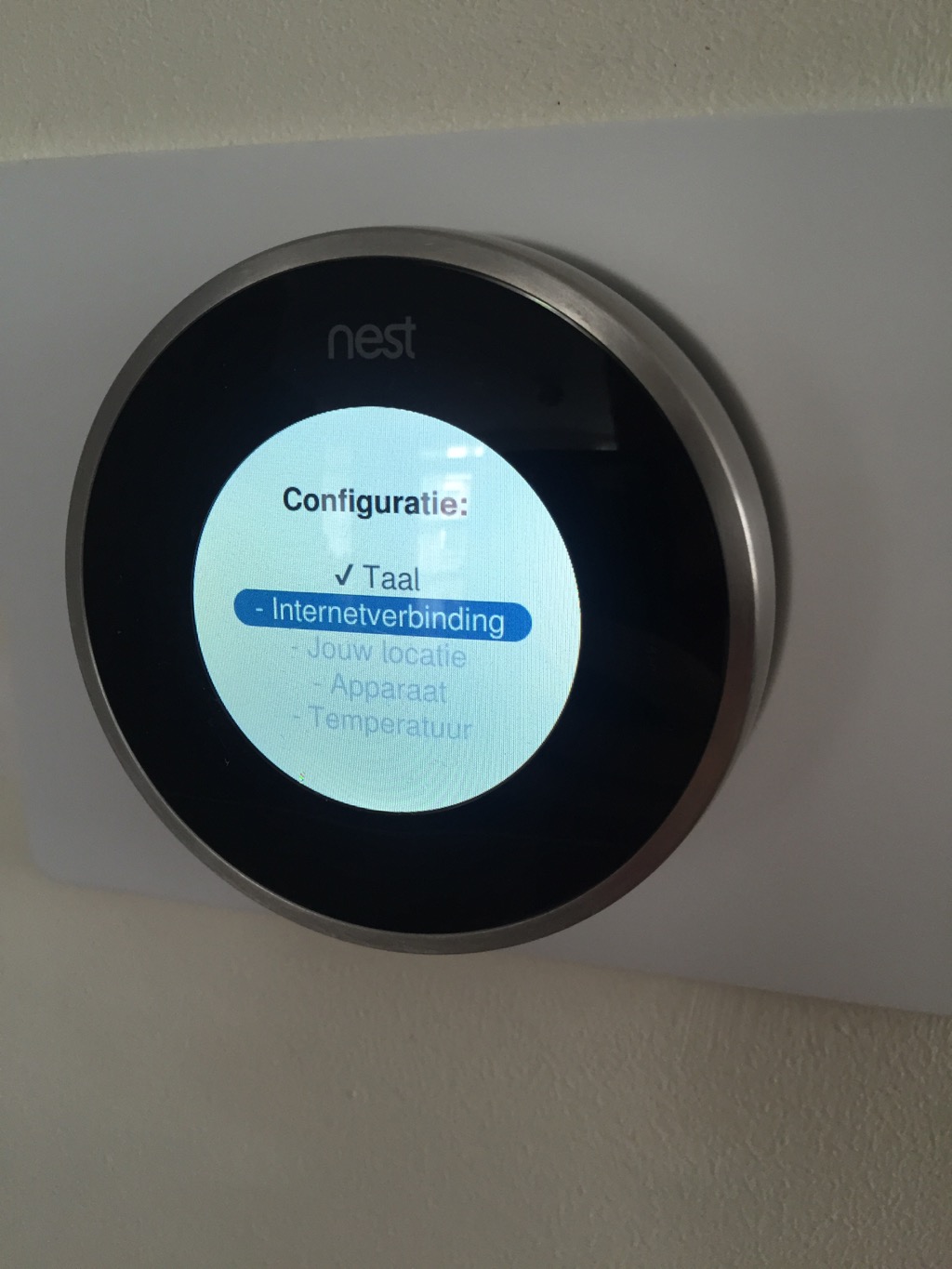This spring I took a wine course, comparable to level WSET-3, together with my girlfriend. To bring the theory into practice, we spent the past 2 weeks on holiday in France to visit two major wine areas: Burgundy and the south of the Rhone valley. A wine-themed vacation. Here are some of our tips and tricks, do’s and don’ts.
Burgundy
Week 1 was in the town of Beaune, right in the middle in the Cote d’Or. Beaune is an ideal home base to explore the region. Even by foot: If you walk out of the village towards the west, you’ll be between the grapes right away. Burgundy = wine, that’s very clear. And Burgundy is pinot noir and chardonnay, two grape varieties you’ll get to know intimately if you stay here for a week.
It’s a great idea to rent a bike. We did that for a day and rode south. Unless you take all day, or are really fit (there are no flat meters, although it rarely gets very steep) you’ll get not much further than Meursault, via Pommard and Volnay. But you’ll see a lot! By car, we took the péage to the most northern town of the Cote d’Or, Fixin, and drove back south towards Beaune through all those famous towns whose names we crammed for so long. Moray-Saint-Denis, Chambolle-Musigny, Vougeot, Vosne-Romanée, Nuits-St-Georges.. It’s great to see these names as town names, just 5 minutes apart by car, rather than as a dry list in a wine theory book.
- In Burgundy, there are plenty of options to taste wine, indicated by ‘degustation’ signs everywhere. You wil generally pay for tasting. If you then purchase, tasting will not be charged in most cases. In my mind, that is not unreasonable, since the area is so popular and the wines are expensive.
- Did I already mention that Burgundy wines are expensive? We needed some time to adjust, before we splurged on our first €30+ bottles. Of course the quality is similarly very high. And in tasting, it always turns out the best wines are the most expensive. Even if you’ll only hear the price after tasting them. “I liked that one best.. oh is that €69.. ok..”. We’re not ready for that yet.
- Use the spittoon. Many tourists don’t, but believe me that you will be able to taste a lot better if you spit it out. Especially if you have 2-3 tasting sessions per day of 5 wines each. It also makes you come across as more serious, and you may get some extras, or a taste from a special barrel, like we once experienced.
- Our top tips when it comes to tasting:
- Chateau Meursault. Beautiful place, very good extensive guided tour, not just about them but informative about the Burgundy area and traditions. It costs €29 each for the ‘9 wines’ tasting option, with really excellent wines. And if tasting is €29, you can imagine what the bottles cost…
- Olivier Leflaive in Puligny-Montrachet. They have a wonderful shaded courtyard, and you’ll be able to just sit and relax and taste some lovely wines. It is also a hotel, with signs saying ‘We can arrange shipping to USA and Hong Kong’. Use to your advantage.
- Chateau Chassagne Montrachet. A lot of emphasis on biological wines, good explanation, friendly people.
- A less satisfying experience was with Drouhin in Beaune. Although the extensive cellar maze with old wine presses is very impressive, it scores a bit low on the price-quality compared to others. Still interesting to see the connection between the Drouhin family and the town of Beaune.
- Our day trip to the Beaujolais region was a bit disappointing as well. Maybe we just weren’t lucky, but the two tastings we did there were ok, but not great. Wines are made from the gamay grape in that region, which makes them very different from the rest of Burgundy. In fact, you don’t hear any mention of Beaujolais on any tour or talk in Burgundy, while the Chablis area (much further away) is mentioned frequently. Beaujolais seems not to be considered part of Burgundy, by the rest of Burgundy. We still took several nice wines, they are of course tasty and especially good value for money. And the scenery is beautiful!
- Don’t forget to try and bring some Cremant-De-Bourgogne. Made just like champagne, but at a friendlier price. A nice change to have as aperitif, or even with a meal.
- Eating out tips for Beaune:
- La Petite Taverne (Facebook link): what a nice restaurant. It is inside an antiques shop, has only 5 tables, and is run by one man who takes care of the guests and prepares the food in the kitchen. So sometimes you’ll see people arrive in the restaurant and there’s no host, because he’s cooking. Entertaining. We had a very tasty wine-fondue (slowly cook pieces of beef in reduced wine). When you leave, all other guests greet you and you’ll get a warm goodbye from the owner. Make sure you get there around 7pm, or make reservations. You can do this via Facebook Messenger, even in english, although response may be hours later. Highly recommended experience in Beaune.
- Also recommended is Les Poppiettes. The owner is italian, there’s a level of chaos in there that is just exactly right, the food is great and the service is very friendly.
- Our favorite wine bar is La Dilettante, a few minutes outside of the center of town. Good choices in wine, and you can get a nice platter of charcuterie or cheeses with it.
As a break from the wine theme, taking a tour of the local mustard factory is recommended. A family-run factory, employing about 18 people. Don’t go there if you have very sensitive eyes, because the mustard fumes in the factory will eventually bring the toughest man to tears.
Chateauneuf-du-Pape
After our week in Burgundy, still reeling from the sticker shock of the expensive wines, we got in our electric car and drove south towards Chateauneuf-du-Pape, central in the southern Rhone valley, about a 4-5 hour drive. We stayed in a very nice Bed and Breakfast which as a certified sommelier as its owner/host. She is very active in the wine industry there, and she knows more places and reputations of wines than you will ever discover by yourself. Highly recommended. Danielle gave us many tips, addresses and even made reservations for a few tours and tastings for us. Around Chateauneuf there are the famous towns of Gigondas, Vacqueyras, Lirac, Tavel, Beaumes-de-Venise.. you name it. We did quite some touring!
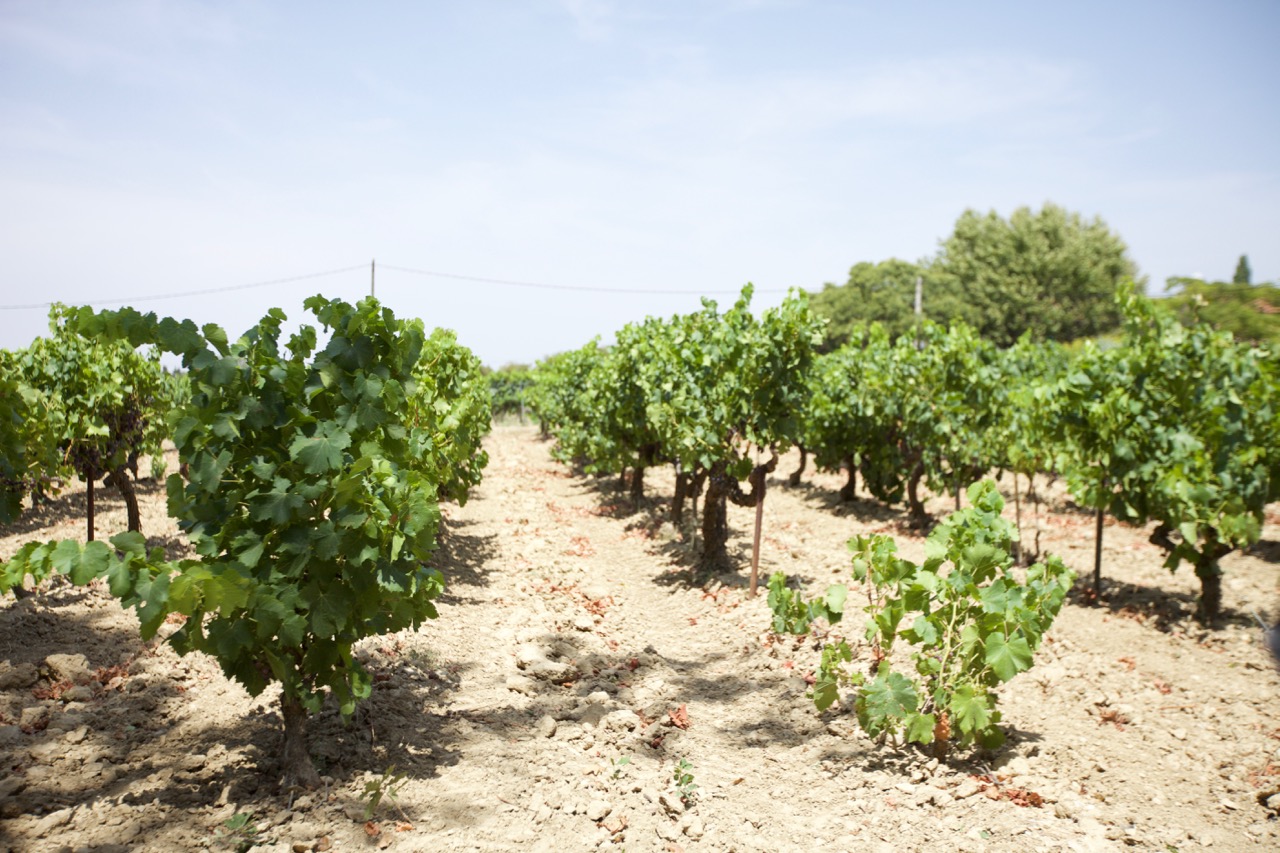
Not all grapevines are planted between pebbles, a cliché image that you will see everywhere. There are many types of soil and they have big impact on the produced wine. .
- As far as eating out in Chateauneuf itself there are not so many options. There is the Le Verger du Pape, near the castle ruins, which is great. The view across the Rhone valley is beautiful and the food and wines are very good. Make sure you make reservations there. We did this for the next day when we walked by one evening, on our way to see the castle ruins (and the interesting wine expo behind it: All 13 permitted varieties of grapes are planted there on one plot). Other nice restaurants are Le Pistou (we went there twice), and La Maisounnette is reputed to also be good but we weren’t able to go there ourselves.
- Tasting is a joy. It is generally free, and the wines are also much more affordable. Very different in character from Burgundy of course, but very good as well. Make sure you also taste plenty of white wines (up and coming in Chateauneuf du Pape), they can be very good. A couple of our favourite addresses:
- Domaine de Banneret, in the town of Chateauneuf, was a great experience. The wife of the owner did a very enthousiastic free tour, in English. There was no pressure at all to purchase, she just loved to tell us the story of their vineyards. Of course we did end up buying some of their bottles… very good smooth full bodied spicy red wine. Only on appointment.
- Domaine Galévan, just outside of Chateauneuf. We had to go here on strong recommendation of our B&B host, who had served us some of their white wine earlier. A very refined fruity taste, with some minerality at the end. The lady winemaker was not there (she was on vacation) but her father helped us out. We bought white, rosé wine and two types of red. Excellent and very affordable, at around €10 per bottle.
- Domaine du Gour de Chaulé in Gigondas. Run by a female winemaker as well, like Galévan. A very nice lady, very open and friendly, clear explanation of their way of making wine, good tour, extensive tasting.
- Domaine la Baroche, in Chateauneuf. A hyper modern way of making wine, which makes it interesting to visit. Concrete vats, sensors everywhere, and very tasty wines. As is common in this area, there is no pressure to buy at all.
- We also visited the town of Laudun. This is one of the towns in the Cote du Rhone that is in the ‘Village’ appellation but is allowed to put the name of their town on the label. This means higher quality. We visited the Domaine Pelaquie, and tasted and bought some very affordable quality wine. Recommended.
- The town of Beaumes-de-Venise is worth a visit too. We tried some very nice sweet dessert-wines at the cooperative. They make a nice gift too. A trip to the other side of the Rhone to visit Lirac and Tavel (famous for their rosé wines) was mixed. We didn’t find Lirac very inspiring, but we had a very nice tasting at Caveau Saint Vincent (Google maps link). They carry rosé of all local Tavel producers, so it’s very nice and interesting to taste them side by side. Friendly proprietor. Please be aware that they close during lunch time.
In general, one can say that in Burgundy, everything is about wine. In the Rhone area this focus is less strong. Burgundy has quite an ‘agricultural’ feel about it, especially the northern part of the Cote d’Or (the Cote des Nuits), with tractors on the roads. As a wine lover it is fantastic to actually see all the differences between the areas and the plots. A slightly different orientation towards the sun can make a big difference in the class of wine produced.
That is in fact the story of the ‘Terroir d’Exception’ wine we purchased at Meursault. Inside a premier cru area, a part of a plot has a disadvantageous orientation towards the sun because it is in a slight dip of the land. Hence, wine coming from that part of the plot isn’t premier cru, and has very different pricing because of that. And we loved it! But those are the details one needs to know; and knowing that each plot is shared between several wine makes, makes things very complex indeed. You can learn about Burgundy your entire life.
The Rhone area is very different. Villages each have their own character, their own face, their own terroir. They all use a selection of the 13 allowed grape varieties, and each village uses their own traditions to produce wine from them. Making each town unique. Vacueyras even has ‘Hollywood sign’ lettering of their town name on the hill. This illustrates the character I think; each town is their own brand, while Burgundy really feels like one contiguous area. And both have their unique charm.
On our way back we spent a night at the ancient town of Troyes. So, champagne as a dessert. Troyes is a very nice town, well worth a visit.
We are already thinking about our next wine vacation. Loire and Bordeaux, or maybe take a different route and visit the Alsace and Mosel/Rheingau area first?

